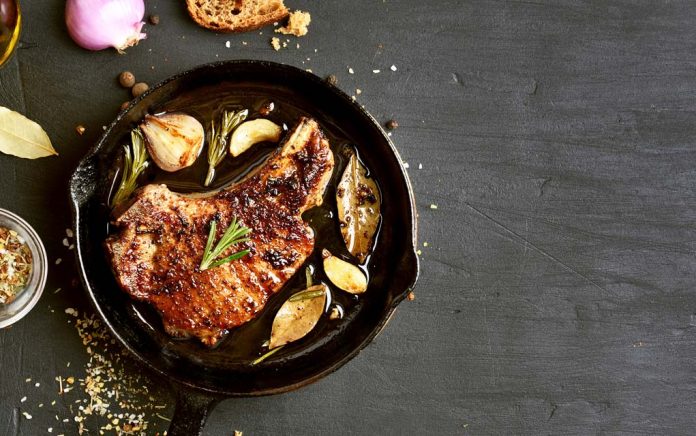
Nitrites are considered a dangerous food additive and the main reason many people avoid cured meats. As a result, a number of ‘preservative-free’ cold cuts have emerged, but are these products truly what they seem to be, and are nitrites as dangerous as we have been led to believe?
Cured meat, as well as any unfrozen food item that isn’t a “whole muscle”, and meat products containing poultry or pork are required by law to include a preservative. Sodium nitrite (sometimes called sodium nitrate or sodium salt) is the preferred additive.
By definition, a “cured” meat has had the preservative nitrate or nitrite combined with salt added to it. The nitrite controversy lies in the fact that it isn’t just found in cold cuts; in fact, for occasional cold cut eaters, only 5 percent of nitrite intake is from cured meats. Nitrites and nitrates are naturally occurring chemical compounds made of nitrogen, an important component of air, water, and soil and essential for plant growth. In other words, soil is full of nitrates, and any plants that grow from the ground draw it from the soil. Nitrates, which convert to nitrites in the body, are naturally occurring in water and particularly high in beets, celery, lettuce, radishes, and spinach. About 85 percent of nitrites in our diet come from vegetables and other natural and healthy foods, including spinach and other leafy greens, beets, corn, fish, dairy products, and cereals.
There are two reasons nitrite is added to processed meats: Firstly, it inhibits the development of Clostridium botulinum, the bacterium which causes botulism, a paralytic illness that can lead to respiratory failure. Unlike most microbes, the botulism bacteria requires an oxygen-free environment to live, so it can contaminate canned or vacuum-packed foods, garlic stored in oil and improperly cured meats.
Secondly, nitrite is responsible for the pink or red colour that gives cured meats the impression that the meat is ‘fresh’ as well as the characteristic flavour of cold cuts.
Pick Your Poison: Botulism or Nitrosamines?
Consumer concern about nitrites in cured meats is a result of several studies that have linked cold cuts to cancer, in particular, colorectal cancer. Nitrites have mostly been accused, but results of various studies have been inconsistent, with some showing a strong correlation between the intake of cured meats and cancer and others finding no link at all. We do know that under certain conditions, nitrites can produce carcinogenic chemical compounds called nitrosamines. Those conditions include strong acidity – as in stomach acid, or cooking with high temperatures, for example, frying. Bacon has been the biggest target as it almost always contains nitrosamines and is cooked at a high temperature. Not all processed meats produce nitrosamines, however, yet there still appears to be a link between cold cuts and cancer and research is looking at the high amounts of sodium and saturated fat found in these foods as other potential causes.
Synthetic vs. Natural Nitrites
Many food manufacturers have created new product lines featuring cold cuts and cured meats that are free of the chemical form of nitrite but instead use cultured celery powder, a natural alternative to nitrites. Lately, some have been criticized for labelling their meats ‘preservative-free’ or claiming ‘no added nitrates’ when, in fact, cultured celery powder contains preformed nitrites.
There are some differences between synthetic and more natural forms of nitrite. Synthetic curing salt is dyed pink to differentiate it from table salt and to help it blend better with meat. Also, the amount of nitrite in a food is more difficult to control when using the natural forms of the preservative. The maximum allowable amount of (synthetic) sodium nitrite added to food is 20 grams per 100 kilograms (or 200 ppm) or less, depending on the type of meat product. Mixing celery salts with a starter (a bacterial culture) to form nitrite is a difficult process to control; hence, a food preserved with cultured celery powder may contain even more nitrites than conventional meat products in which the amount of added nitrites is measured.
While the jury on the dangers of nitrites is still out, there are ways to protect your health and ‘have your bacon and eat it too,’ so to speak. The antioxidants ascorbic acid, commonly known as vitamin C, as well as vitamin E have been proven to inhibit the conversion of sodium nitrite to nitrosamines. If you choose to eat cold cuts or bacon, protect yourself by taking 500 to 1,000 mg of vitamin C and 200 IU of vitamin E before your meal. Limit your intake of all processed meats – aside from nitrites, the average amount of sodium per serving (three slices) is 900 mg, not far off from the upper daily limit. Steer clear of cured meats with a long shelf life (an indication that a higher amount of nitrite has been added) and meat products cured with synthetic nitrites. Avoid bacon, cooking meats at high temperatures, and especially fried meats.
Labelling terms representing nitrites:
- Curing salts
- Sodium salt
- Sodium nitrite
- Sodium nitrate
- Potassium nitrite
- Potassium nitrate
- Cultured celery salt
References:
http://www.inspection.gc.ca/english/fssa/meavia/man/ch4/annexce.shtml
www.hc-sc.gc.ca/ewh-semt/pubs/water-eau/nitrate_nitrite/index-eng.php#Food
http://www.naturalnews.com/011148.html#ixzz1uUyVOTUA
culinaryarts.about.com/od/seasoningflavoring/a/nitrates.htm
Special thanks to Jamie from Rowe Farms










